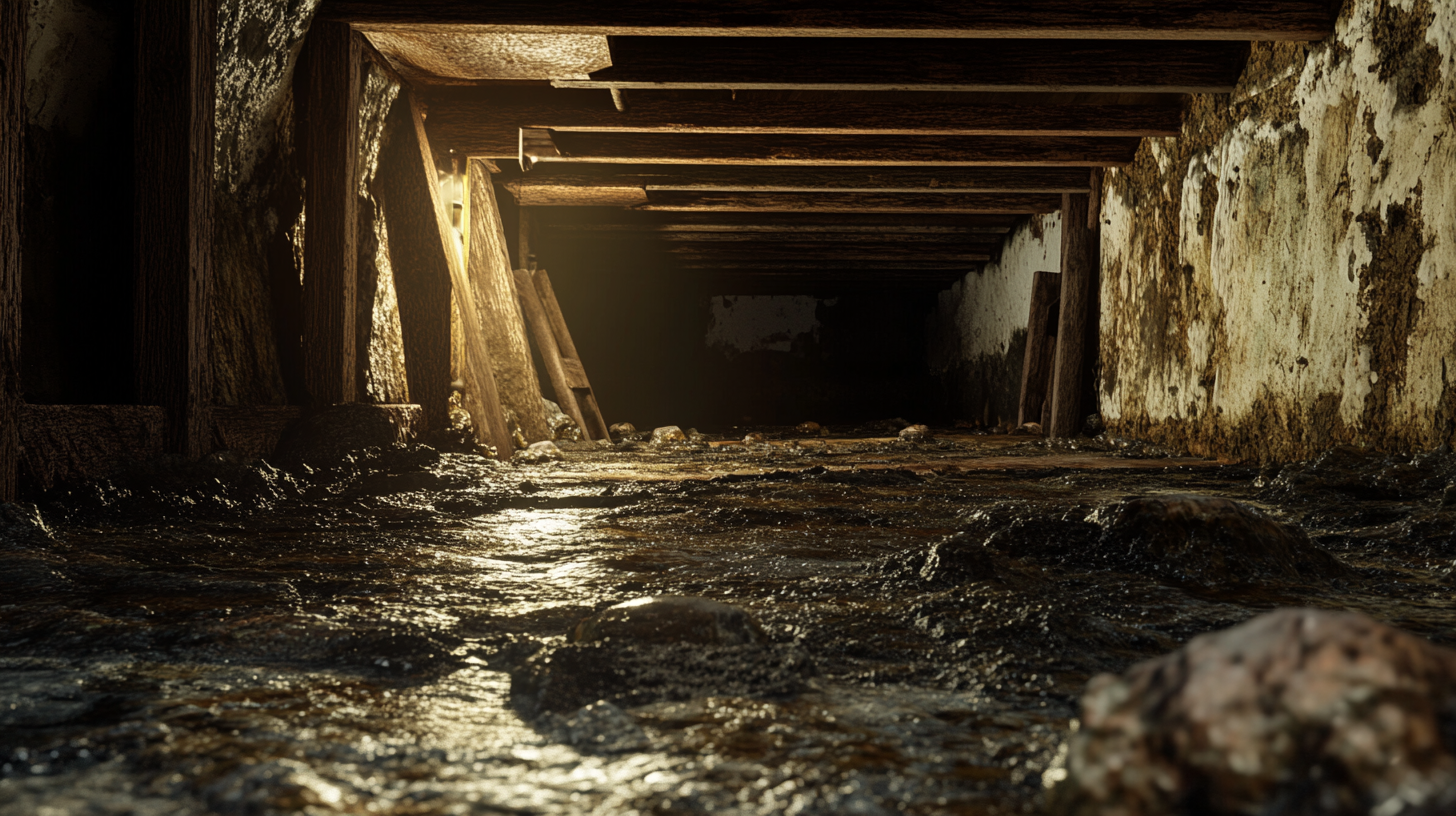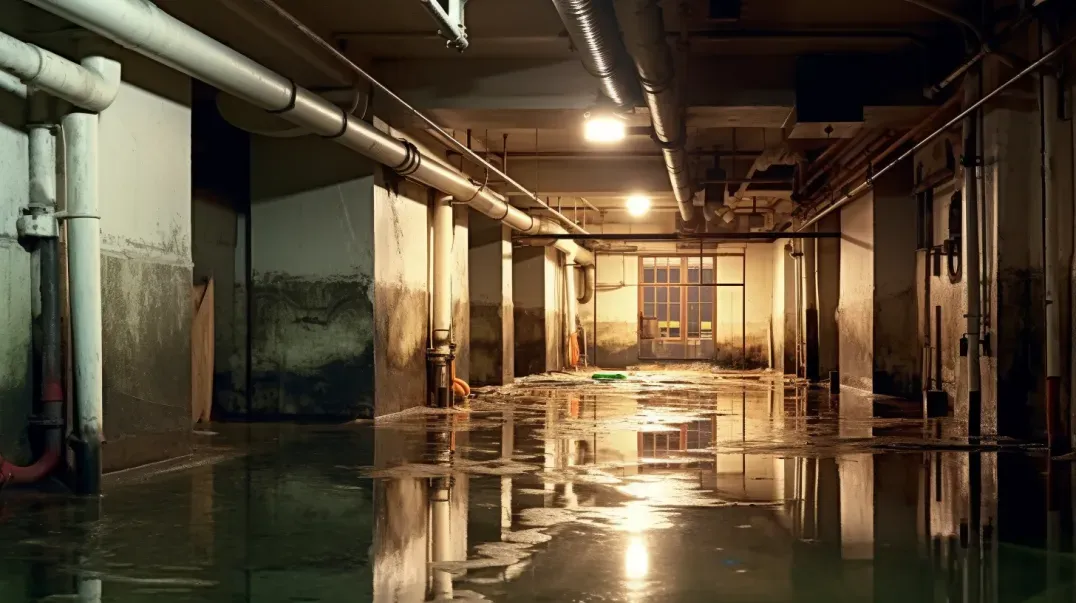Now IS THe Time To...

Crawl Space Services In Knoxville, TN
Stetson Howard: 865-432-6743
CRAWL SPACE ENCAPSULATION, REPAIR, WATERPROOFING & MOLD REMOVAL
No-Obligation, Free Inspections
No-Obligation Free Estimates
We Warranty All of Our Work
100% Satisfaction Guaranteed
In the intricate ecosystem of a home, where each component plays a vital role in ensuring comfort and safety, the sump pump stands as a silent guardian against one of nature's most persistent forces: water. Far from the spotlight, nestled in the lowest part of basements and crawl spaces, sump pumps perform the crucial task of managing water intrusion, protecting homes from the potentially devastating effects of flooding and moisture accumulation. This blog delves into the indispensable role of sump pumps in home water management, highlighting their importance in maintaining the structural integrity, health, and safety of our living spaces.
Water has a way of finding its path into our homes, whether through heavy rains, melting snow, or rising groundwater levels. Without proper management, this water can lead to flooding, property damage, and the growth of mold and mildew, compromising both the physical structure of the home and the health of its inhabitants. Herein lies the critical function of the sump pump: to efficiently collect and redirect excess water away from the home, ensuring that basements remain dry, foundations stay intact, and indoor air quality is preserved.
The significance of sump pumps extends beyond mere water removal; they are a proactive measure against the unpredictable and often destructive nature of water. By understanding the operation, benefits, and maintenance of these essential devices, homeowners can ensure their homes are equipped to handle the challenges posed by water intrusion. This blog aims to provide a comprehensive overview of sump pumps, from their basic operation and types to the considerations for installation and the importance of regular maintenance. Join us as we explore how sump pumps serve as the cornerstone of effective home water management, safeguarding our homes and providing peace of mind in the face of environmental challenges.
Recognizing the Importance of Proper Installation
The decision to install a sump pump is a proactive step toward safeguarding your home from water damage. However, the effectiveness of this crucial system hinges not just on the decision to install one but on ensuring that the installation is done correctly. Proper installation is the linchpin in the functionality, efficiency, and longevity of a sump pump, directly impacting its ability to protect your home. This section explores the dire consequences of improper installation and the long-term impacts on home safety and maintenance costs.
Consequences of Improper Installation
Potential Risks and Damages Caused by Incorrect Sump Pump Installation
Improper installation of a sump pump can lead to a myriad of problems, each compounding the risk of water damage and associated costs. Some of the most significant risks include:
- Inadequate Water Management: Incorrectly installed sump pumps may fail to effectively manage water, leading to basement flooding, especially during heavy rainfall or rapid snowmelt.
- Overworking the Pump: A sump pump installed without proper consideration for the home's water table or without a correctly sized basin may run continuously, leading to premature wear and failure.
- Electrical Hazards: Faulty electrical connections or improper use of extension cords can pose serious safety risks, including the potential for electrical fires.
- Structural Damage: Chronic water intrusion, not adequately mitigated by a poorly installed sump pump, can weaken the home's foundation, leading to costly structural repairs.
Long-term Impacts on Home Safety and Maintenance Costs
The long-term implications of improper sump pump installation extend beyond the immediate inconvenience and potential for water damage. They can significantly affect both the safety of your home and your financial bottom line:
- Increased Maintenance Costs: A sump pump that is not installed correctly may require more frequent repairs and replacements, leading to higher maintenance costs over time.
- Reduced Property Value: Homes with a history of water damage or known issues with water management systems, such as improperly installed sump pumps, may see a reduction in property value.
- Health Risks: Persistent moisture and the resulting mold growth from inadequate water management can pose health risks to the home's inhabitants, particularly affecting air quality and leading to respiratory issues.
- Insurance Implications: Repeated claims for water damage due to an improperly installed sump pump may affect your home insurance premiums or coverage eligibility.
Recognizing the importance of proper sump pump installation is crucial for homeowners looking to protect their investment and ensure a safe living environment. By understanding the potential risks and long-term impacts of incorrect installation, homeowners can make informed decisions about installing and maintaining their sump pump systems, prioritizing both functionality and safety.
Common Mistakes in Sump Pump Installation
Installing a sump pump is a critical measure to protect your home from water damage. However, the process is fraught with potential pitfalls that can undermine the system's effectiveness and longevity. Recognizing and avoiding these common mistakes can ensure your sump pump operates efficiently, providing reliable protection against water intrusion. This section highlights key errors to avoid in sump pump sizing, sump pit preparation, pump placement, and discharge pipe installation.
Incorrect Sump Pump Sizing
The Importance of Choosing the Right Size and Capacity
Selecting a sump pump with the appropriate size and capacity for your home is crucial. A pump that's too small may not be able to handle the volume of water during heavy rainfall, while a pump that's too large can cycle on and off too frequently, reducing its lifespan.
How an Incorrectly Sized Pump Can Lead to Inefficiency and Failure
An incorrectly sized pump strains to manage water levels, leading to inefficiency and potential failure. Overworked pumps may fail prematurely, leaving your home vulnerable to flooding and the associated damages.
Inadequate Sump Pit Preparation
Guidelines for Proper Sump Pit Sizing and Placement
The sump pit should be large enough to accommodate your pump, with additional space for water collection. It must be located at the lowest point of your basement or crawlspace to effectively collect water. Proper placement ensures that water naturally flows towards the pit, facilitating efficient water removal.
Risks Associated with Improper Pit Construction
Improperly constructed sump pits may not collect water effectively, leading to inadequate water management and potential flooding. Additionally, a pit that's too small or incorrectly positioned can cause the pump to work harder than necessary, increasing wear and reducing its operational lifespan.
Improper Placement and Positioning of the Pump
The Significance of Correct Pump Placement Within the Pit
Correct placement of the pump within the sump pit is vital for optimal operation. The pump should be positioned so that its float switch can move freely without obstruction, ensuring it activates and deactivates at the appropriate water levels.
Potential Issues Arising from Incorrect Positioning
Incorrect positioning can lead to frequent cycling or failure to activate, resulting in water overflow. Ensuring the pump is securely positioned also prevents vibrations and noise, contributing to a quieter operation.
Faulty Discharge Pipe Installation
Importance of Ensuring a Secure and Properly Directed Discharge Line
The discharge pipe plays a crucial role in directing water away from your home's foundation. It must be securely attached to the pump and routed to an appropriate discharge point to prevent water from re-entering your basement.
Consequences of Leaks or Poor Water Routing
Improperly installed discharge pipes can lead to leaks, reducing the system's efficiency and potentially causing water damage to your home. Poorly routed discharge lines may direct water towards the foundation, undermining the effectiveness of the sump pump and leading to the very issues it's meant to prevent.
Installation Oversights That Can Lead to Failure
A sump pump installation is a complex process that requires attention to detail to ensure the system operates effectively and protects your home from water damage. However, certain oversights during installation can compromise the system's functionality, leading to potential failures. This section highlights critical aspects often overlooked, including the installation of check valves, backup systems, and adherence to local building codes and regulations.
Neglecting Check Valve Installation
Role of the Check Valve in Preventing Backflow
The check valve, a crucial component of the sump pump system, prevents water that has been pumped out of the sump pit from flowing back into it. This valve ensures that once water is expelled from your basement, it stays out, contributing to the efficiency and effectiveness of the pump.
Risks Associated with Omitting the Check Valve
Omitting the check valve can lead to continuous cycling of the pump as water flows back into the pit, causing unnecessary wear and tear on the pump and potentially leading to premature failure. This oversight can significantly reduce the system's ability to manage water effectively, especially during heavy rainfall or flooding conditions.
Overlooking Backup Systems and Alarms
The Necessity of Backup Power Solutions and Water Level Alarms
Backup power solutions, such as battery backups or water-powered backup systems, ensure that your sump pump continues to operate during power outages, a common occurrence during severe storms when the risk of flooding is highest. Water level alarms alert homeowners to high water levels in the sump pit, indicating potential issues with the pump's operation before flooding occurs.
How Neglecting These Systems Can Lead to Unnoticed Failures
Neglecting to install backup systems and alarms can lead to unnoticed failures, especially during critical times when the pump's operation is most needed. Without these safeguards, homeowners may be unaware of a malfunctioning pump until it's too late, resulting in preventable water damage and costly repairs.
Ignoring Local Building Codes and Regulations
Importance of Compliance with Local Regulations for Safety and Legality
Adhering to local building codes and regulations is essential for ensuring the safety and legality of your sump pump installation. These regulations are designed to protect homeowners and the community by ensuring that installations meet specific standards and are performed correctly.
Potential Legal and Insurance Implications of Non-Compliance
Ignoring local building codes can lead to legal and insurance implications. Non-compliance may result in fines, penalties, and potentially having to redo the installation to meet legal standards. Additionally, insurance claims for water damage may be denied if the sump pump system was not installed in accordance with local regulations, leaving homeowners to bear the full cost of repairs.
Best Practices for Avoiding Installation Mistakes
The installation of a sump pump is a critical process that demands precision and foresight. Mistakes during installation can compromise the system's effectiveness, leading to potential water damage and unnecessary expenses. Implementing best practices for planning, adherence to guidelines, and post-installation care can significantly reduce the risk of errors. This section outlines essential steps and strategies for a successful sump pump installation.
Thorough Planning and Preparation
Steps for Proper Planning, Including Site Assessment and Material Gathering
A successful installation begins with meticulous planning and preparation. Key steps include:
- Site Assessment: Evaluate your basement or crawl space to determine the lowest point for the sump pit, the type of soil, and potential water entry points. Consider the area's water table and flooding history to choose a pump with the appropriate capacity.
- Material Gathering: Compile a list of all necessary materials and tools before beginning the installation. This includes the sump pump, pit or basin, check valve, discharge piping, gravel, and any waterproofing materials.
- Permit Acquisition: Check with local authorities to determine if a permit is required for sump pump installation and ensure compliance with all local building codes and regulations.
Following Manufacturer Instructions and Guidelines
Importance of Adhering to the Specific Guidelines Provided by the Pump Manufacturer
Each sump pump model comes with a set of instructions and guidelines from the manufacturer. These instructions are designed to ensure optimal performance and include specific recommendations for installation, such as:
- Pump Placement: Guidelines on how to securely place the pump within the pit to prevent tipping or vibration.
- Discharge Routing: Instructions on the proper routing and sloping of the discharge pipe to ensure efficient water expulsion.
- Electrical Connections: Safety precautions and steps for making electrical connections, including the use of a ground fault circuit interrupter (GFCI) outlet.
Adhering to these guidelines is crucial for the safe and effective operation of your sump pump.
Regular Testing and Maintenance Post-Installation
How Routine Checks and Maintenance Can Prevent or Catch Issues Early
Regular testing and maintenance of your sump pump are vital to ensure it remains in good working order. Routine checks can identify and rectify issues before they lead to failure, especially during critical periods of heavy rain or melting snow.
Recommended Maintenance Schedule and Checklist
- Monthly: Check the operation of the pump by pouring water into the pit until the pump activates. Inspect the discharge line for any signs of blockage or leaks.
- Quarterly: Clean the pump inlet screen of any debris. Test the float switch to ensure it's triggering the pump correctly.
- Annually: Perform a comprehensive inspection and cleaning of the pit, pump, and discharge line. Check the check valve for proper operation and replace the backup system's battery if necessary.
Adopting these best practices for planning, installation, and maintenance can significantly reduce the likelihood of installation mistakes and ensure your sump pump system operates efficiently, providing reliable protection against water damage.
When to Seek Professional Help
While many homeowners are tempted to tackle home improvement projects on their own, certain situations, especially those involving critical systems like sump pumps, necessitate the expertise of a professional. Recognizing when the complexity of your installation exceeds your DIY capabilities can save you time, money, and potential headaches in the long run. This section explores scenarios where professional help is advisable and the benefits of opting for professional installation.
Recognizing the Complexity of Your Installation
Situations Where Professional Expertise is Advisable
Certain conditions and scenarios significantly increase the complexity of sump pump installation, making professional assistance not just beneficial but essential:
- High Water Table: Homes in areas with a high water table require specialized knowledge to ensure the sump pump system can handle the volume of water effectively.
- Complex Basement Layouts: Basements with intricate layouts or multiple water entry points may need a more sophisticated system design that professionals can best provide.
- Local Building Codes: Navigating the maze of local building codes and permits can be daunting. Professionals are familiar with these regulations and can ensure your installation complies, avoiding legal issues.
- Existing Water Damage: If your home has a history of water damage, a professional can assess the underlying issues and recommend a comprehensive solution that might include more than just a sump pump.
Benefits of Professional Installation
Advantages of Hiring a Professional, Including Warranty Preservation and Peace of Mind
Opting for professional sump pump installation comes with several key benefits:
- Expertise and Experience: Professionals bring years of experience and specialized knowledge to your project, ensuring the installation is done correctly and efficiently.
- Warranty Preservation: Many sump pump warranties require professional installation as a condition of the warranty. Hiring a professional helps preserve your warranty, providing additional protection for your investment.
- Peace of Mind: Knowing your sump pump was installed by a professional gives you confidence in its reliability, especially during severe weather conditions when you need it most.
- Time Savings: A professional can complete the installation more quickly than the average DIYer, saving you time and allowing you to focus on other priorities.
- Custom Solutions: Professionals can offer customized solutions tailored to your home's specific needs, ensuring optimal water management.
Recognizing when to seek professional help for your sump pump installation is crucial for ensuring the system's effectiveness and longevity. By evaluating the complexity of your installation and considering the benefits of professional services, you can make an informed decision that best protects your home from water damage.
FAQs
Recent Blog Posts
Crawl Space News







